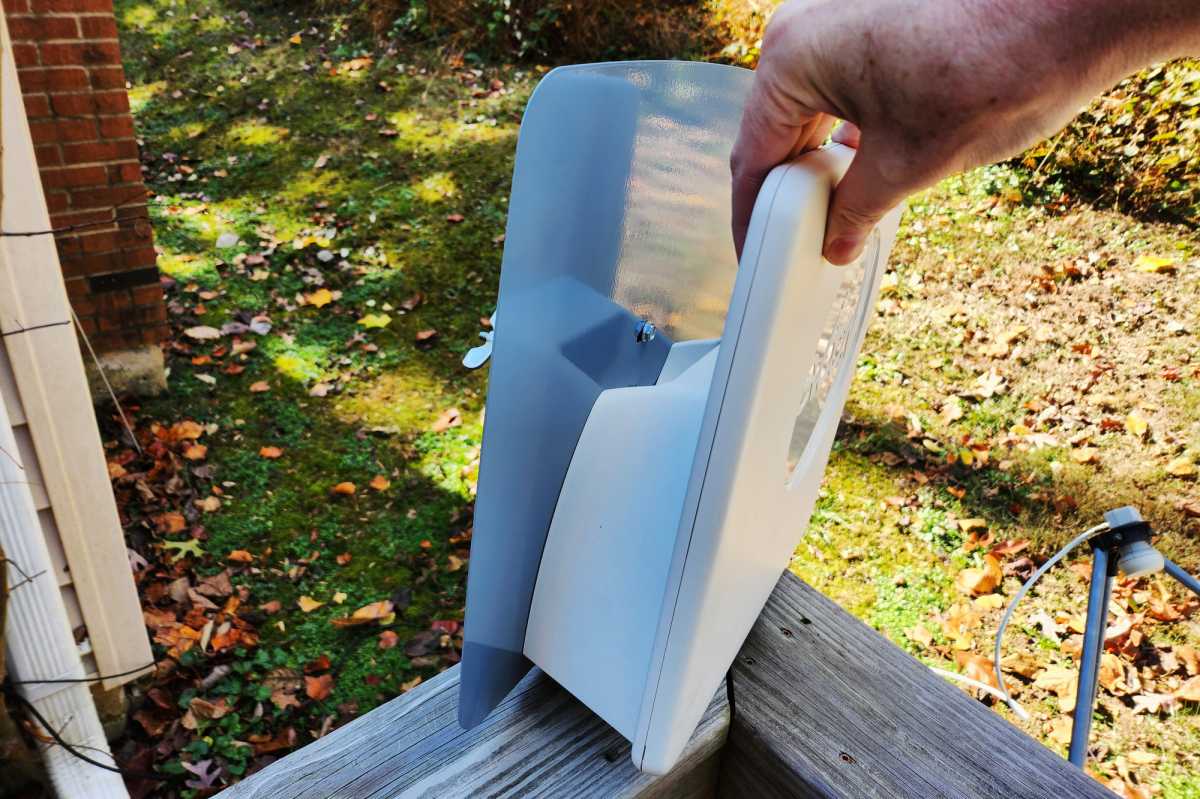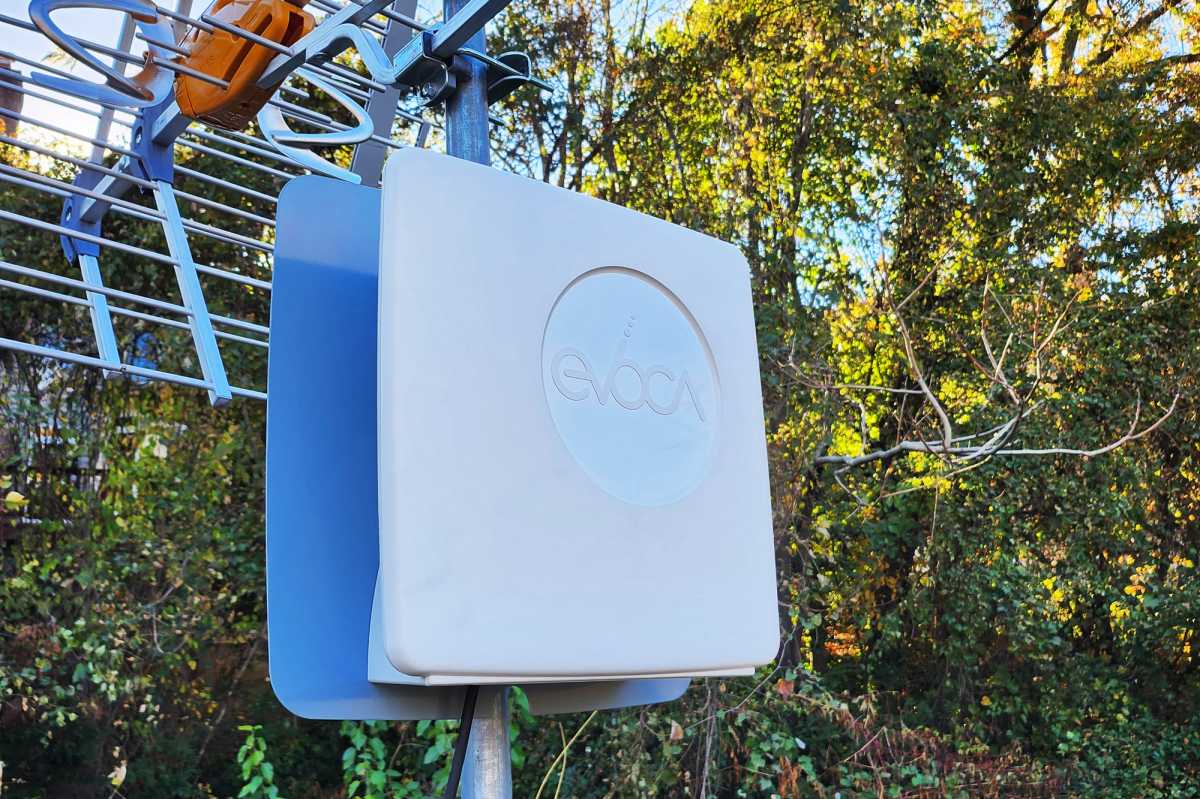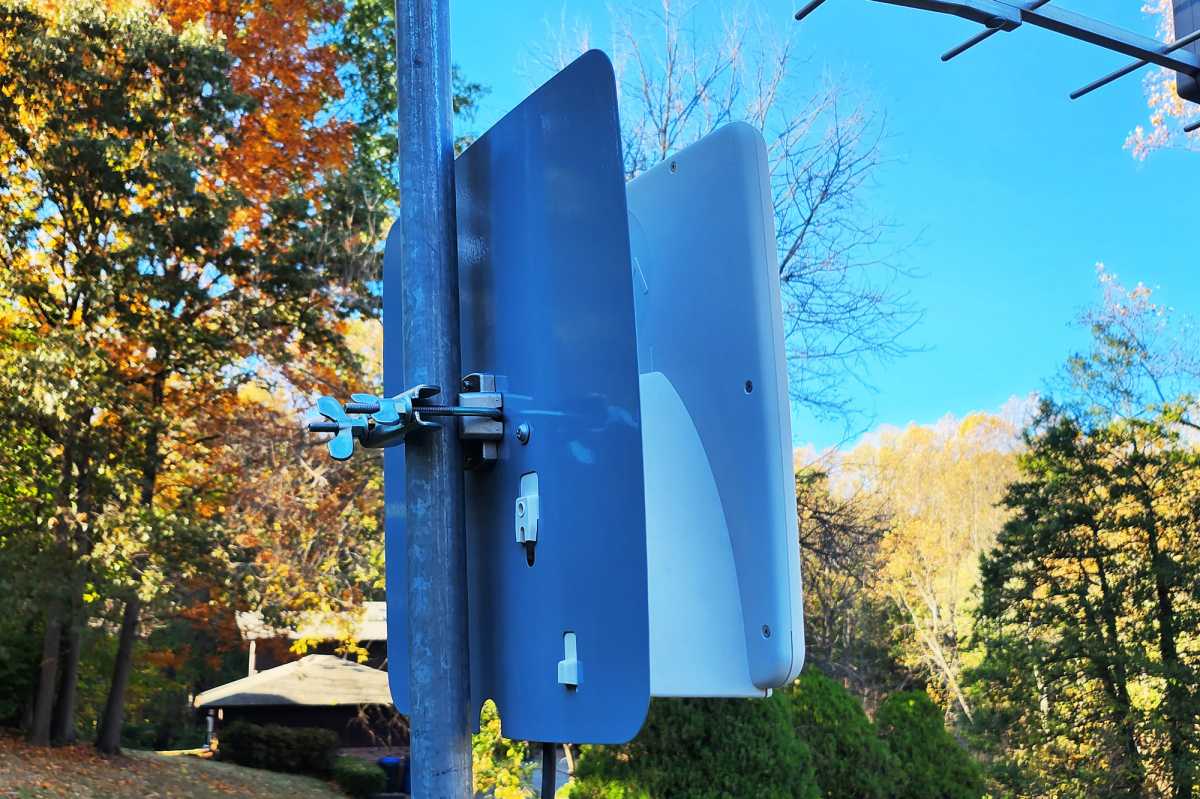At a glance
Pros
- Good reception of high-power local and distant channels
- Stable performance
- Built-in 5G antenna
Our Verdict
The Zapperbox A1 is a good choice for reception of high- and medium-powered broadcast television signals in and on the outskirts of cities.
Price When Reviewed
$149.95
Best Prices Today: ZapperBox A1
$149.95
ZapperBox is better known for its NextGen TV tuner than for building TV antennas; and in fact, the ZapperBox A1 is manufactured by Televes, a Spanish company whose other antennas have delivered impressive performances. This particular device bears the Evoca brand, a startup that offered over-the-air NextGen TV service in some U.S. markets until it flamed out in late 2022.
That branding explains a couple of unique aspects of this antenna: In addition to the TV output, which you’ll connect to a tuner, there is a built-in 5G cellular antenna and an output labeled “MIMO.” These were for an experimental system that Evoca was testing to increase bandwidth for datacasting services. The antenna is now being sold by ZapperBox as a conventional TV antenna, and that’s how I tested it.
The antenna managed perfect reception of all local, high-powered TV stations and managed to pull in most of the high-power stations from a neighboring market.
Design & build
The ZapperBox A1 is a chonky boy measuring 15 x 14 x 5 inches (HxWxD) (38 x 35.6 x 12.6 centimeters). While the width and height isn’t so different from competing antennas, it is considerably thicker than most. This could be a design choice to eliminate the need for a separate stand or mast.

Ther ZapperBox A1 is much thicker than any of the TV antennas we’ve reviewed to date. The reflector can be removed if you find that it renders the antenna too directional.
Martyn Williams/Foundry
If you have enough space, you could probably stand this up indoors, but you’ll also always get better reception and performance from mounting an antenna outdoors, with an attic location being the next best thing. I tested it mounted to a mast on a house, just under an existing TV antenna, a Televes Dat Boss.
This review is part of TechHive’s in-depth coverage of the best TV antennas.
Installation
The ZapperBox A1 is very easy to put together. All its reception elements are contained within the large plastic shell, so not much needs to be done. It comes with an optional reflector, which is basically a large metal sheet that screws to the back of the antenna. The reflector improves sensitivity, but it also makes the antenna more directional; you’ll need to aim it carefully if you use it. If you know you get strong local signals from several directions, on the other hand, you’ll want to try it without the reflector.

The ZapperBox A1 can operate indoors or out, freestanding or mounted to a mast. As with any antenna that can withstand the elements, you’ll get the best performance when it’s installed outdoors.
Martyn Williams/Foundry
Inside the house, you’ll need to connect the antenna to a small plastic box that feeds it power. If you forget to do this, reception with be noticeably worse (ask me how I know).
Performance
Designed to cover the VHF High and UHF channels from 7 to 36, the ZapperBox A1 includes a filter to block strong local cellular signals from the TV output. This covers the vast majority of stations on the air today, but it excludes VHF Low channels 2 through 6, which few antennas cover. You can check local broadcast channels on a site like Rabbit Ears.
I ran channel scans across the range of channels and monitored signal level and digital signal quality through an HDHomeRun Flex 4K tuner. The results were good.

If all the broadcast towers you want to pull in are located in the same direction, the reflector will boost your TV tuner’s reception.
Martyn Williams/Foundry
The antenna managed perfect reception of all local, high-powered TV stations and managed to pull in most of the high-power stations from a neighboring market. Getting local stations is easy for most antennas, but pulling in the distant ones is usually where we see a difference between various antennas. In this case, the ZapperBox ZXA-1 performed well.
It didn’t quite match up to the Dat Boss antenna I was using before, but that’s a much larger antenna and another step up in terms of sensitivity, so the difference wasn’t a surprise.
Should you buy the ZapperBox A1 TV antenna?
The ZapperBox A1 worked well on stations that broadcast a strong signal, offering error-free reliable reception of local and some distant stations. It was not as good at pulling in distant and low-power stations as my existing antenna, the Televes Dat Boss. For those reasons, this antenna is best-suited to areas with good- to medium-level signals. If you live in a rural area or are trying to pull in stations with weak signals, I recommend using a larger, more conventional antenna.
You should get similar performance with strong local channels if your deploy the ZapperBox A1 indoors, but distant stations will present more of a channel. As always, my best advice is to install an outdoor antenna if at all possible.
Specifications
- Receives VHF High and UHF signals, channels 7 to 36
- Filters out Low VHF signals
- Dimensions: 15 x 14 x 5 inches (HxWxD)
- Fabricated from ABS plastic with an optional metal reflector
- Can operate freestanding or mounted to a mast
- Can be installed indoors or out
- Integrated LTE filter
- Integrated cellular antenna can be used with a cellphone booster system

